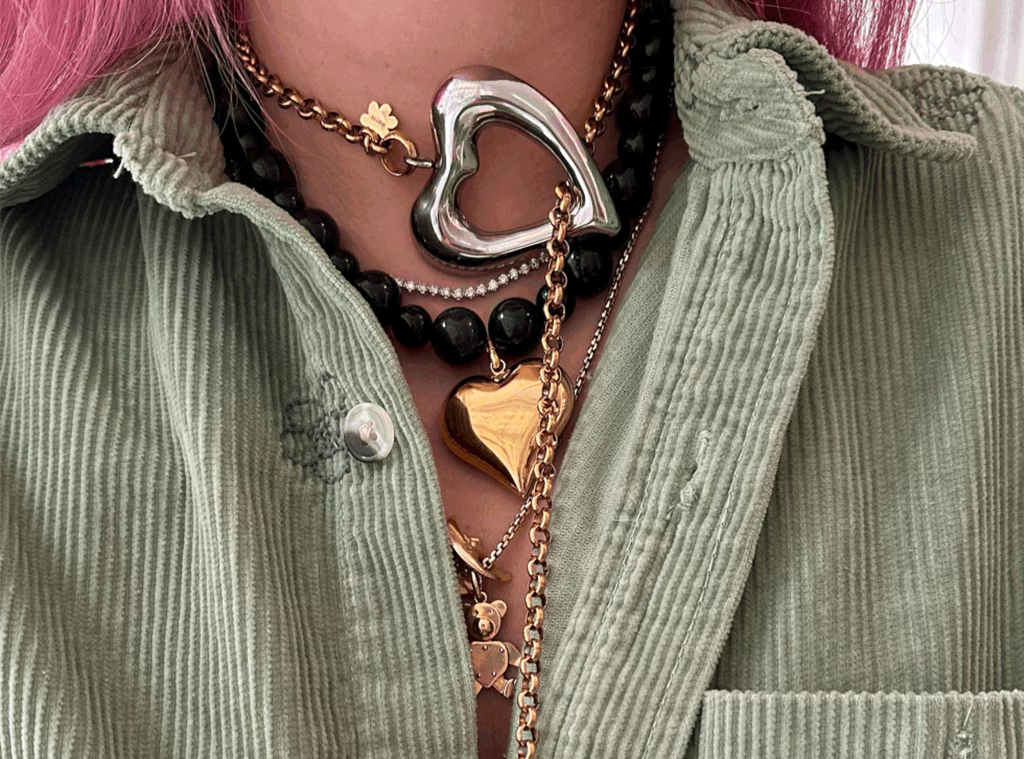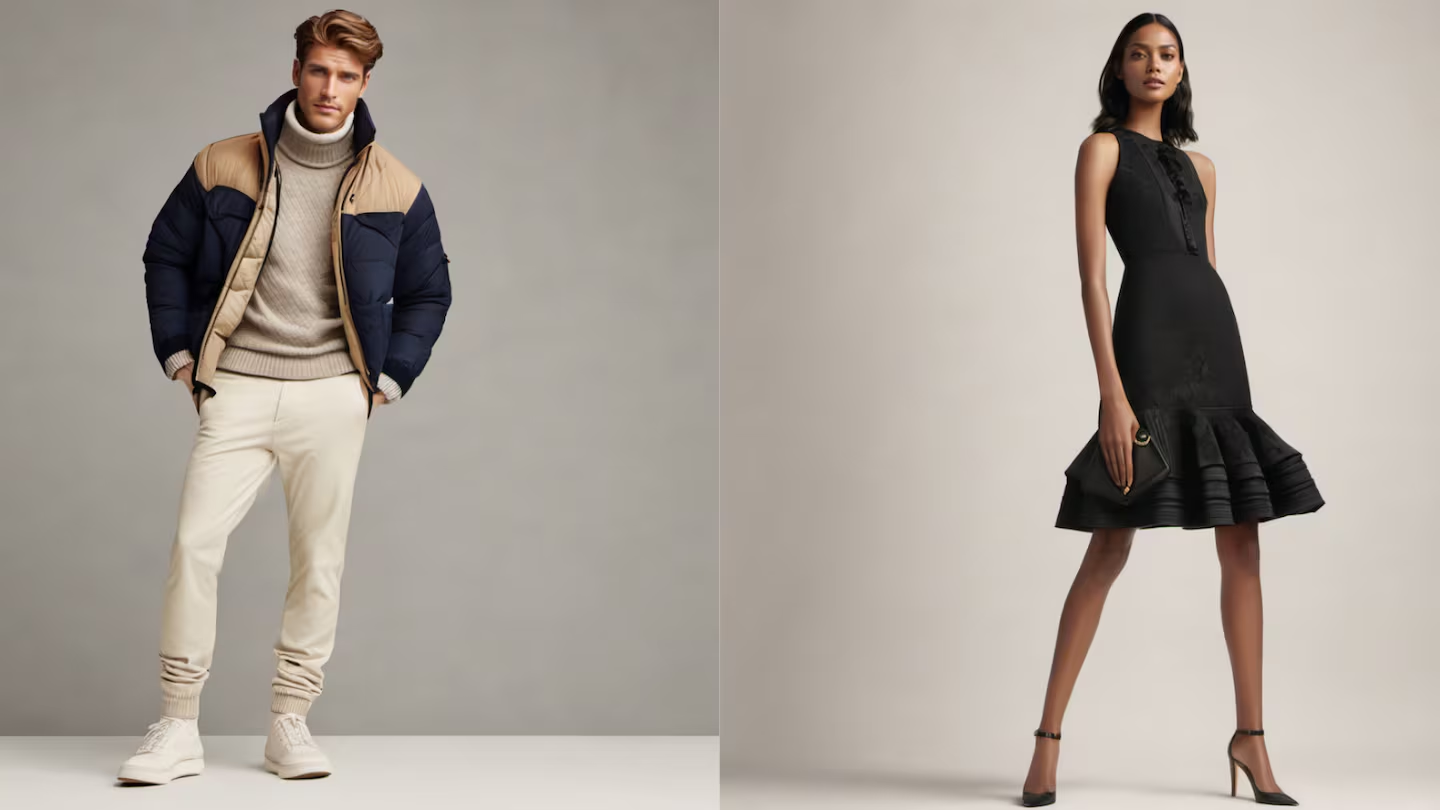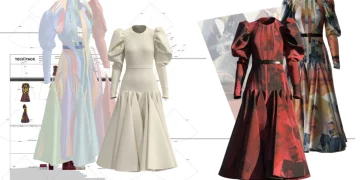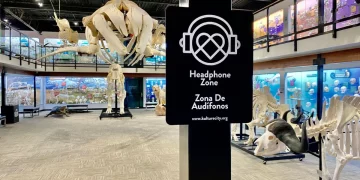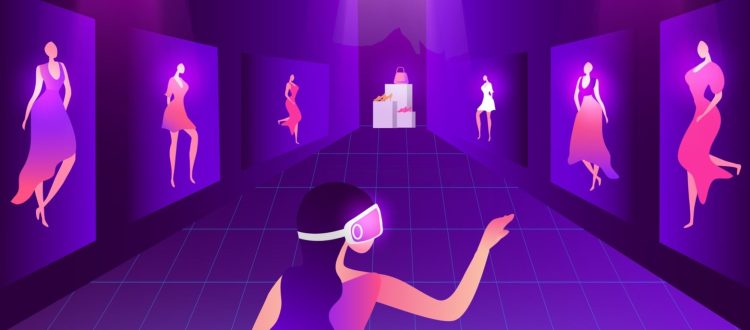The intersection of technology and fashion has been a topic of great intrigue, debate, and speculation for years. Whether it’s wearable devices, AI-driven designs, or the futuristic fabrics that promise to change how we dress, there is no shortage of innovation at the crossroads of these two industries. However, as technology continues to evolve at an unprecedented pace, the question remains: Can fashion and technology truly collide in a way that enhances both fields? Or will they forever remain parallel tracks, only briefly crossing each other’s paths?
In this article, we’ll explore the complex relationship between technology and fashion, examining their current intersection, potential future developments, and the challenges they face in achieving a seamless fusion.
The Digital Revolution in Fashion: From Online Shopping to AI
The world of fashion has been radically transformed by the digital revolution. One of the most immediate impacts technology has had on fashion is the rise of online shopping. What once required a trip to the store, now can be done from the comfort of your home with a few clicks of a mouse or taps on a smartphone. The convenience of e-commerce has reshaped consumer behavior and given rise to an entirely new industry — one that demands a more streamlined, personalized shopping experience.
Artificial Intelligence and Personalization:
AI is now at the forefront of transforming how people shop for clothes. For instance, retailers like Amazon and Zara have implemented AI-driven recommendation systems that analyze consumer data and suggest items based on past purchases, browsing habits, and even the weather in your location. These algorithms not only provide more personalized experiences but also help predict trends, allowing brands to respond to consumer demand faster than ever before.
But the use of AI doesn’t stop at personalized shopping. Fashion designers are also using machine learning algorithms to predict trends and even assist in the design process. AI tools can analyze vast amounts of data, from social media posts to runway shows, and identify patterns in consumer preferences. In this way, AI is bridging the gap between fast-paced digital trends and traditional fashion cycles, giving designers a new way to stay ahead of the curve.
Wearable Tech: From Fitness Trackers to Smart Clothing
When we think of technology and fashion intersecting, one of the first things that come to mind is wearable tech. Devices like the Apple Watch, Fitbit, and various other fitness trackers have become integral parts of many people’s lives. But wearable tech is not just about fitness tracking — it’s about integrating technology into clothing in a way that changes the way we experience fashion.

Smart Textiles:
Smart textiles, also known as e-textiles or conductive fabrics, are a prime example of how technology is fusing with fashion. These fabrics have embedded sensors, circuits, or other electronic components that allow them to monitor and respond to changes in the environment or the wearer’s body. For instance, a shirt that monitors your heart rate or a jacket that adjusts its temperature according to the weather outside.
One of the most exciting areas of development is in health-monitoring garments. Companies like Hexoskin and OMsignal are pioneering clothing that can track vital signs like heart rate, respiratory rate, and activity levels, all while providing real-time data to mobile apps. These garments are perfect examples of how tech can enhance fashion by making it more functional and connected to the wearer’s needs.
Another promising avenue in wearable tech is the integration of augmented reality (AR) into fashion. Imagine trying on clothes virtually through an AR app on your phone or in-store mirror, eliminating the need to actually try on each item physically. Retailers like ASOS and Zara have already begun experimenting with virtual try-ons, allowing customers to see how clothing will look on them without stepping into a fitting room.
Sustainable Fashion: Tech’s Role in Creating a Greener Future
Sustainability is one of the most pressing issues facing the fashion industry today. Fast fashion, which produces cheap, disposable clothing at rapid rates, has led to significant environmental consequences. However, technology has the potential to revolutionize the way clothes are designed, produced, and consumed, offering new solutions to some of the most critical challenges in fashion.
3D Printing in Fashion:
One of the most exciting developments in sustainable fashion is the use of 3D printing. Designers are now able to create intricate garments and accessories using 3D printing technology, which reduces material waste and allows for on-demand production. This technology is already being used to create unique pieces that are personalized to the wearer’s measurements, cutting down on the need for mass production and overproduction.
Recycled Materials and Biofabrication:
Another technology that holds promise for sustainability is the use of recycled materials and biofabrication. Companies like Stella McCartney and Patagonia are incorporating recycled fabrics, such as plastic bottles and textile waste, into their collections. At the same time, emerging technologies in biofabrication are enabling the creation of materials from living organisms, such as lab-grown leather made from mushroom fibers or bioengineered silk. These developments reduce the need for traditional farming practices, which can be resource-intensive and harmful to the environment.
Fashion Meets the Metaverse: The Virtual Fashion Revolution
As the concept of the metaverse — a virtual reality space where users can interact with each other and the environment — continues to develop, fashion brands are beginning to explore this new digital frontier. The idea of digital-only fashion, where clothes are purchased, worn, and displayed entirely in the virtual world, is becoming more appealing.
Digital-Only Fashion:
Fashion houses like Balenciaga, Gucci, and Dolce & Gabbana have already launched digital-only collections for avatars in the metaverse. These virtual garments are often highly stylized and allow for unlimited creativity, as there are no constraints of fabric or physical design. Consumers can buy these items for their virtual avatars, allowing them to express their style in the metaverse in ways that might be impossible in the physical world.
But beyond virtual clothing, the metaverse could also change how fashion brands engage with customers. Virtual fashion shows, pop-up shops, and even fully immersive shopping experiences are all possibilities in this new digital world. The concept of “try-before-you-buy” could take on an entirely new meaning in the metaverse, with users trying on virtual clothing before making a purchase, all without leaving their homes.
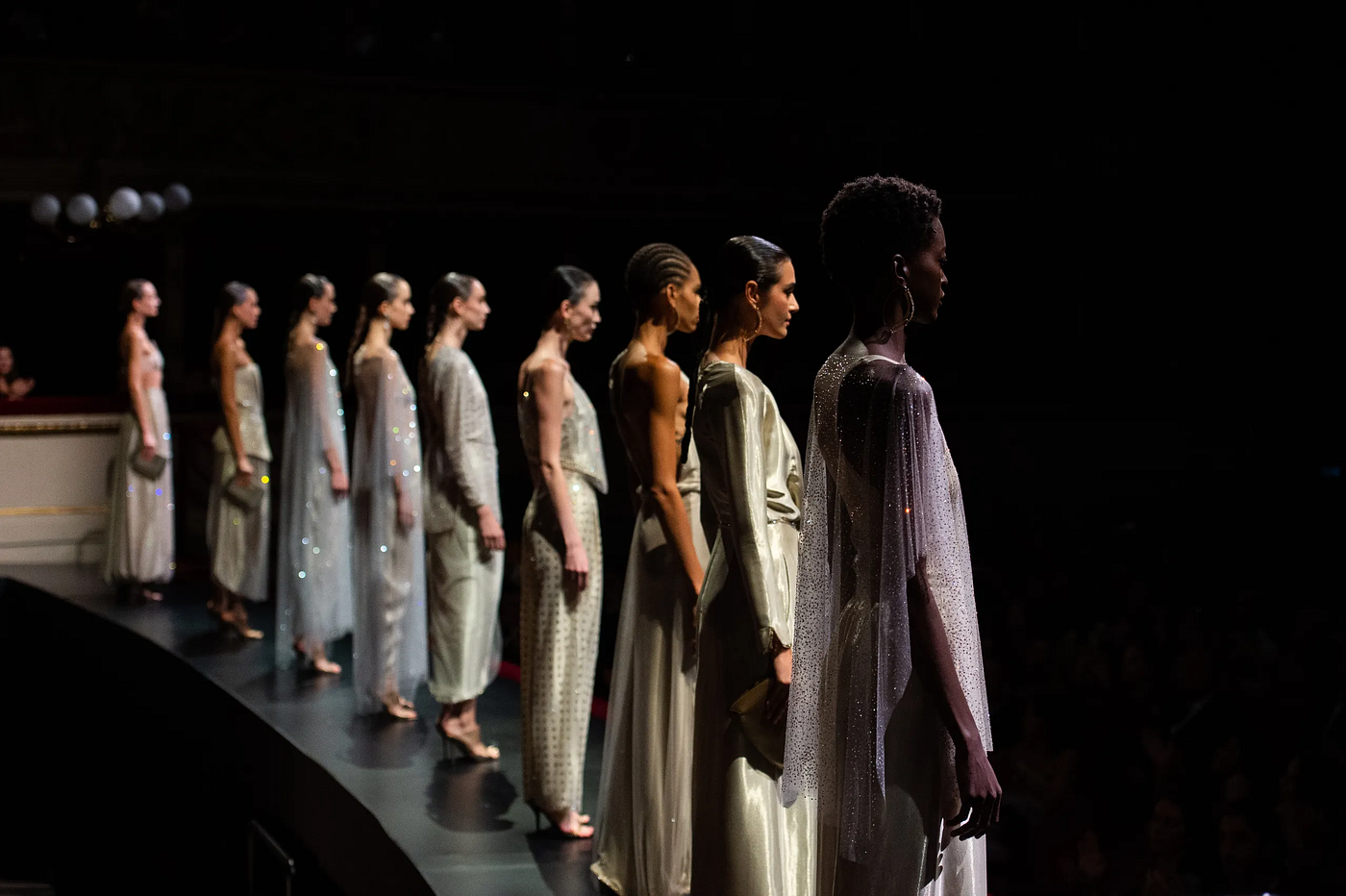
Challenges to a True Collision Between Tech and Fashion
Despite the excitement surrounding the integration of technology and fashion, several challenges remain in creating a truly seamless collision between the two industries.
1. Balancing Aesthetics with Functionality:
One of the biggest hurdles in merging fashion and technology is balancing aesthetics with functionality. While tech can enhance clothing in terms of performance — like offering better temperature regulation, more comfort, or health-tracking features — there is still a significant concern about the wearability and style of tech-integrated garments. Consumers often prioritize looks over practicality, so if a piece of wearable tech is bulky or unattractive, it will struggle to gain mass-market appeal.
2. Cost and Accessibility:
Another obstacle is the cost of tech-integrated fashion. Many wearable tech products are still expensive and out of reach for the average consumer. While luxury brands may be able to offer high-end smart clothing, mass-market fashion could take years to catch up in terms of affordability and accessibility. Furthermore, as we’ve seen with previous technological innovations, there’s often a period of market fragmentation, where different brands develop their own proprietary systems that don’t necessarily communicate with one another.
3. Data Privacy and Security:
As fashion becomes increasingly digital and connected, data privacy and security concerns will only grow. With wearables collecting data on our health, location, and personal preferences, consumers will demand stronger safeguards to protect their information. Additionally, the integration of AI and machine learning in design processes could lead to concerns about algorithms driving trends without human oversight, creating a cycle where fashion feels more mechanical than creative.
Conclusion: A Harmonious Future?
The relationship between technology and fashion is complex and continually evolving. While significant strides have been made in blending the two industries, it’s clear that there are still challenges to overcome before they can truly collide in a harmonious and seamless way. However, the potential for innovation is undeniable. From smart clothing and wearable tech to virtual fashion and sustainable production methods, technology is providing new ways to revolutionize how we think about fashion.
As technology continues to advance and consumer preferences evolve, the future of fashion may very well be shaped by the merging of these two worlds. The true question is not whether they will collide, but how they will do so — and what the resulting fusion will look like.


